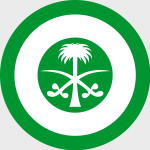Hobby Master HA3359 Royal Saudi Air Force Northrop RF-5E Tiger II Fighter (1:72 Scale)
"Obsolete weapons do not deter."
- British Prime Minister Margaret Thatcher
 The Northrop F-5A/B Freedom Fighter and F-5E/F Tiger II are part of a family of widely used light supersonic fighter aircraft, designed and built by Northrop in the United States, beginning in the 1960s. Hundreds remain in service in air forces around the world in the early 21st Century, and the type has also been the basis for a number of other aircraft.
The Northrop F-5A/B Freedom Fighter and F-5E/F Tiger II are part of a family of widely used light supersonic fighter aircraft, designed and built by Northrop in the United States, beginning in the 1960s. Hundreds remain in service in air forces around the world in the early 21st Century, and the type has also been the basis for a number of other aircraft.
The F-5 started life as a privately funded light fighter program by Northrop in the 1950s. The first generation F-5A Freedom Fighter entered service in the 1960s. Over 800 were produced through 1972 for U.S. allies during the Cold War. The USAF had no need for a light fighter, but it did specify a requirement for a supersonic trainer and procured about 1,200 of a derivative airframe for this purpose, the T-38 Talon.
The improved second-generation F-5E Tiger II was also primarily used by American Cold War allies and, in limited quantities, served in US military aviation as a training and aggressor aircraft; Tiger II production amounted to 1,400 of all versions, with production ending in 1987. Many F-5s continuing in service into the 1990s and 2000s have undergone a wide variety of upgrade programs to keep pace with the changing combat environment. The F-5 was also developed into a dedicated reconnaissance version, the RF-5 Tigereye.
The F-5 serves as a starting point for a series of design studies which resulted in the twin-tailed Northrop YF-17 and the F/A-18 series of carrier-based fighters. The F-20 Tigershark was an advanced version of the F-5E that did not find a market. The F-5N/F variants remain in service with the United States Navy and United States Marine Corps as an adversary trainer
Pictured here is a 1:72 scale rendition of a Royal Saudi Air Force Northrop F-5E Tiger II fighter.
Now in stock!
Dimensions:
Wingspan: 7-3/4-inches
Length: 4-1/2-inches
Release Date: August 2018
Historical Account: "The House of Fahd" - The RSAF was formed in the mid-1920s with British assistance. It was re-organized in 1950 and began to receive American assistance from 1952 including the use of Dhahran by the United States Air Force.
The Saudi forces are equipped with mainly western hardware. Main suppliers are the United States of America and the United Kingdom. Both the UK and the US are involved in training programs conducted in Saudi Arabia.
For Middle Eastern standards the armed forces of Saudi Arabia are relatively small. Its strength however is derived from advanced technology and not from numerical superiority. This is why the armed forces are under a continuing modernization program. The backbone of the fighter force is formed by 134 Tornados from which a batch of 48 Tornado IDS was ordered in 1993 under the al-Yamamah II program and 72 F-15S aircraft delivered from the mid-90s that operate besides the 41 F-15C/D aircraft delivered in the early 90s. Aircraft training is executed on the Pilatus PC-9, BAe Hawk, Boeing F-15D Eagle and the Northrop F-5F Tiger II. The C-130 is the mainstay of the transport fleet and the Hercules is assisted by CASA CN-235s. Reconnaissance is performed by 17sq with their RF-5E and the Boeing E-3A is the Airborne Early Warning platform operated by 18sq.
The VIP support fleet consists of a wide variety of civil registered aircraft such as the Boeing B707, B737 and B747, Lockheed Tri-Stars, MD11s and G1159A as well as Lockheed L-100-30. The HZ- prefix used in the civilian registrations of these aircraft derived from the former name of the territory (Hejaz).


